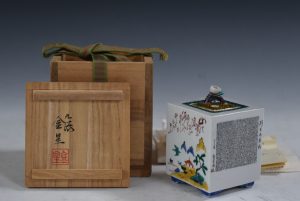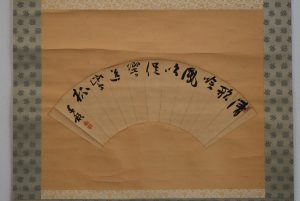岐阜市で河本五郎の灰釉花入を1万円で買い取りました。
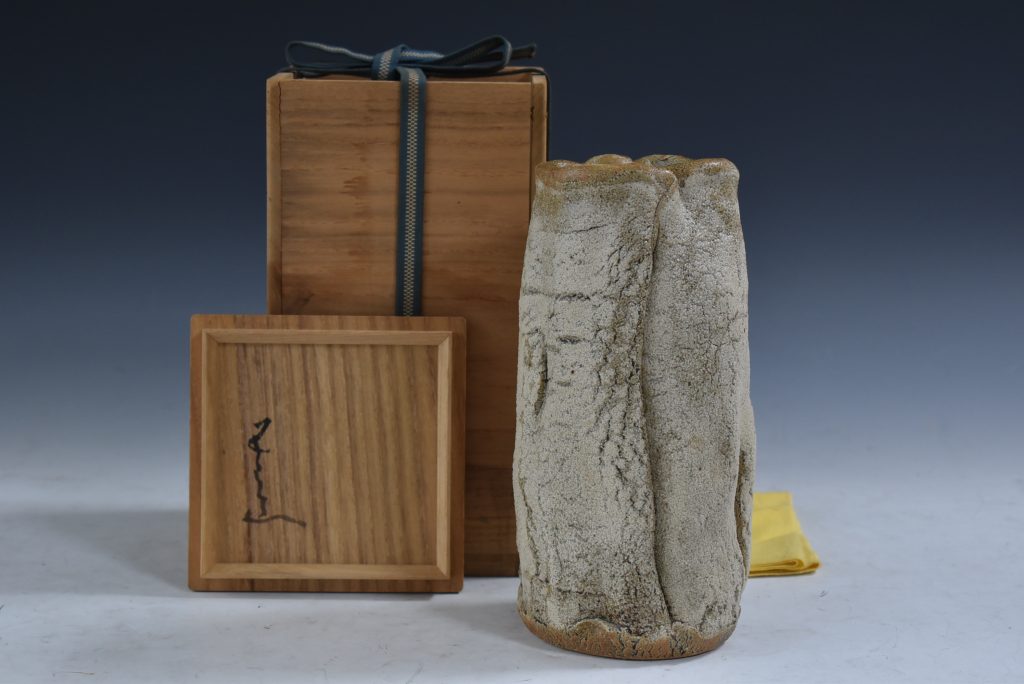
河本五郎の買取相場
陶芸家の作品は出来不出来によって価格が変動するため、作品の相場を判断する際、一般的な指標や市場の動向だけを基にするのは難しいです。陶芸家の作品の価値は、その作品が持つ芸術的な完成度や独自性によって大きく左右されることがあります。また、美術愛好家や収集家の間での評価も、作品の出来不出来に影響を受けることが多いのです。
したがって、陶芸家の作品相場を参照する際は、その価格がその作品の真の価値を正確に反映しているとは限りません。特定の作品が高額で取引されたとしても、それがその作品の品質や重要性を示すわけではありません。逆に、安価で取引された作品が低品質であるとは言えないのです。
このような背景を踏まえ、河本五郎の作品相場を参照する際には、あくまでも一つの情報としてお考え下さい。
| 河本五郎 色絵人物文花生 花瓶 | ¥30,000円 |
| 河本五郎 染付歌垣文花生 花瓶 | ¥20,000円 |
| 河本五郎 色絵鳥文壺 | ¥15,000円 |
| 河本五郎 青花茶碗 | ¥5,000円 |
| 河本五郎 灰釉茶碗 | ¥5,000円 |
| 河本五郎 色絵飾皿 | ¥3,000円 |
陶芸作品の買取は三冬花にお任せください。
陶芸作品は、その歴史的価値や芸術的背景、そして時代を超えて受け継がれる美しさを持つものです。そのような貴重な品を売却する際、手元に残るのは金銭的価値だけでなく、その品物が次に適切な場所で適切な扱いを受けることへの期待も含まれます。そんな大切な作品の売却を考えるなら、「三冬花」にお任せください。
河本五郎の略歴
生年大正8年(1919)年3月15日に愛知県瀬戸市に生まれ、地元での初等教育を終えた後、陶芸の道を志し、愛知県窯業学校に入学。その後、国立京都陶芸器試験所の研究科を修了し、さらに専門的な技術と知識を身につけました。
経歴研究所を修了した彼は、瀬戸市に戻り、染付磁器で名高い河本礫亭の養子として家を継ぎました。昭和28年に日展に初入選し、その才能を広く認知されるようになりました。30年代に入ると彼の作品はさらに評価を受け、現代日本陶芸大賞などの三大賞を次々と受賞。その功績は国内外で高く評価され、ブラッセル万国博のグランプリや加州国際博での最高デザイン賞を受賞するなど、世界的にも名を馳せました。
昭和40年代に入ると、磁器制作に更なる情熱を注ぎ込み、現代の感覚を取り入れた洒脱な色絵や、新しい染め付け技法を開発。これらの作品は多くの人々から絶賛され、その境地を切り開く先駆者としての地位を確立しました。また、彼の審美眼と経験は、朝日陶芸展の審査員としても活かされました。
昭和53年には中日文化賞を受賞し、その多大なる貢献が改めて讃えられました。しかし、昭和61年(1986)年3月23日に彼はこの世を去りました。彼の生涯は、日本の陶芸界に多大なる足跡を残し、後世に多くの影響を与えることとなりました。
The price of a ceramic artist's work can vary depending on its quality, making it challenging to judge its market value based solely on general indicators or market trends. The value of a ceramic artist's work can be significantly influenced by its artistic merit and uniqueness. Additionally, the appraisal within art enthusiasts and collectors often heavily depends on the quality of the piece.
Therefore, when referring to the market value of a ceramic artist's work, it's important to note that the price may not accurately reflect the true worth of that piece. Just because a particular piece sold for a high price doesn't necessarily indicate its quality or significance. Conversely, a piece that sold for a low price doesn't necessarily imply it's of low quality.
Considering this context, when referring to the market value of Gorō Kawamoto's works, please take it as just one piece of information.
Ceramic artworks possess historical value, artistic context, and a timeless beauty that transcends generations. When selling such a precious item, what remains in one's hands is not just its monetary value, but also the hope that the piece will find its next rightful place and receive proper care. If you're considering selling such a cherished work, please entrust it to "Santouka."
Brief Biography of Gorō Kawamoto:
Born on March 15th, 1919, during the Taisho era, in Seto City, Aichi Prefecture, Gorō Kawamoto completed his primary education locally before deciding to pursue the path of pottery. He enrolled in the Aichi Prefectural Pottery School and later graduated from the research department of the National Kyoto Ceramic Testing Institute, further enhancing his specialized skills and knowledge.
Upon completing his studies, he returned to Seto City and became the adopted heir to the famed Kawamoto Rakutei, renowned for its blue-and-white porcelain. By 1953 (Showa 28), he gained recognition with his first entry in the Nitten exhibition. As the 1950s progressed, his works garnered even more acclaim, earning him awards such as the Contemporary Japanese Ceramic Art Grand Prize. His achievements were recognized both domestically and internationally, exemplified by accolades like the Grand Prix at the Brussels World Exposition and the Top Design Award at the California International Expo.
Entering the 1960s, Kawamoto poured even more passion into porcelain production, introducing modern sensibilities, developing elegant colored paintings, and innovating new blue-and-white painting techniques. These creations were widely acclaimed, solidifying his position as a pioneer who opened up new artistic horizons. His keen aesthetic sense and vast experience also found him a role as a judge at the Asahi Ceramic Art Exhibition.
In 1978 (Showa 53), his significant contributions were celebrated with the receipt of the Chunichi Culture Award. Unfortunately, on March 23rd, 1986 (Showa 61), Gorō Kawamoto passed away. His legacy left an indelible mark on the Japanese pottery industry, influencing many future generations.
投稿者プロフィール
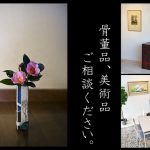
-
東京京橋の画廊、名古屋の骨董店であわせて10年以上勤務し、20年以上、骨董品や掛け軸、美術品の買取業務に携わっております。骨董品、掛け軸、美術品の査定買取は三冬花にお任せください。愛知県(名古屋市)、岐阜県、三重県、滋賀県のお客様はお気軽にお問い合わせください。出張料、査定料など一切無料です。(※内容によってはお伺いができない場合もございます)
三冬花では価値ある美術品や骨董品を次世代へ橋渡しをする仕事をしております。
最新の投稿
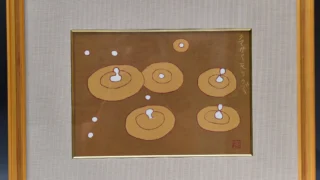 名古屋市買取実績 絵画2024年5月27日【買取事例】熊谷守一の木版画『水滴』買取実績
名古屋市買取実績 絵画2024年5月27日【買取事例】熊谷守一の木版画『水滴』買取実績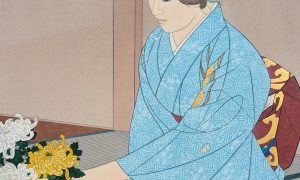 名古屋市緑区買取実績2024年5月21日【伊東深水】の木版画「菊を活ける」の買取実績
名古屋市緑区買取実績2024年5月21日【伊東深水】の木版画「菊を活ける」の買取実績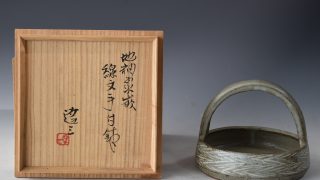 豊田市買取実績 陶磁器2024年5月19日【島岡達三】地釉象嵌線文手付鉢の買取実績
豊田市買取実績 陶磁器2024年5月19日【島岡達三】地釉象嵌線文手付鉢の買取実績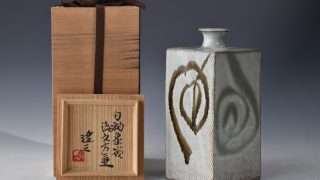 四日市買取実績 陶磁器2024年5月19日【島岡達三】白釉象嵌流文方壷の買取実績
四日市買取実績 陶磁器2024年5月19日【島岡達三】白釉象嵌流文方壷の買取実績

